What’s inside this article: What social scripts or social narratives are, the key features that should be included, step-by-step instruction to making your own social narratives, and an overview of some commonly used types of social stories.

Social stories are a visual teaching tool used to teach children social skills, life skills, routines, and expected behaviors.
Social stories actually fall into a broader category of teaching tools know as social scripts. There are various types of social scripts that can target the specific skills that your child is struggling with.
This post is part of a 13 part series. Each post in the series will explain an evidence-based strategy used by professionals for managing behavior with children on the autism spectrum. Each part of this series will contain a table of contents so you can easily navigate to the different strategies.
Table of Contents
- Introduction
- Build a Relationship
- Individualize Motivation
- Observe, Listen, then Join
- Optimize Language
- The Premack Principal
- Basic Redirect
- Strategy 7: Breaks
- Picture Rehearsal
- Add Structure at Home
- Teach Independence with Prompting
- Transactional Supports
- Add Structure to the Learning Environment

What Are Social Scripts?
Social scripts are “an instructional strategy that uses the repeated practice of a sequence of behaviors to teach appropriate or socially desirable behaviors”.
When using picture rehearsal as a teaching strategy, you provide the child with a sequence of pictures, along with a social script.
There are different types of social scripts:
- Social Stories ™
- Cartooning
- Video modeling
- Power cards
- Cognitive Picture Rehearsal
What Are Social Scripts Used For?
Social scripts help pre-teach new skills in a quiet, calm environment. They primarily teach socially acceptable behaviors and calm down techniques. H
The strategy is based on the concept of positive reinforcement of learning and visual supports.
You must provide opportunities to practice the appropriate behavior or skills repeatedly while using immediate positive reinforcement.
How To Create A Social Script
How to Create a Social Script:
- Identify something that is challenging for your child.
This can be anything they are having a hard time with right now. For example, their bedtime routine, thunderstorms, saying “Hello” to their teacher.
- What do you want to teach your child to do?
Jot down what you want your child to do in these situations to help you start planning what to teach. For example, if you want to work on their bedtime routine note their bedtime, the sequence of events leading up to bedtime, and how you will signal the start of this routine.
- Decide which type of script to use.
Choose the best format of picture rehearsal based on what you want to teach your child and what their current abilities are.
- Create your visual
Following the format outlined below, create the visual. You don’t need to be an artist to create quality visuals for your child. You can draw stick people, take photographs with your phone, find pictures online, etc.
Key Features
Regardless of the type of social script you’re creating, any script you create for your child should be:
- Brief – Use pictures and short text to describe the situation or steps concisely.
- Individualized – Write your script from your child’s perspective and keep it pertinent to their current situation.
- Practiced Repeatedly – You should go over the script many times with your child and use positive reinforcement. Until your child is ready to use the skills in a real-life situation.
Social Skills Digital Mega Bundle
98 pages of social narratives & visual supports for teaching social skills.
Social Stories™
Social stories are trademarked and based on work by Carol Grey but you can create your own version of these, as “personal stories” for your child.
The main purposes of social stories are to describe, explain and suggest – rather than direct – expected behavior.
These stories describe social situations and highlight relevant cues for your child.
Social Story™ follows a specific formula of types of sentences. These stories may be more effective for kids who have some self-awareness and language skills.
Examples of Social Stories:

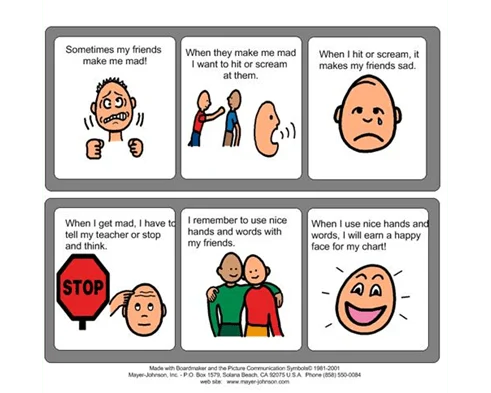
Cognitive Picture Rehearsal
This is an
The purpose is to teach individuals with significant developmental disabilities as a means of replacing behaviors.
When professionals are creating cognitive picture rehearsal scripts they must follow a very specific process. A full functional behavior assessment is completed before the script is written and illustrated.
Then, pictures or line drawings illustrate the antecedent, the target behavior and the consequences (reinforcement). The script incorporates relaxation into the script or visuals.
It’s important to note that relaxation steps are taught first as a separate skill.
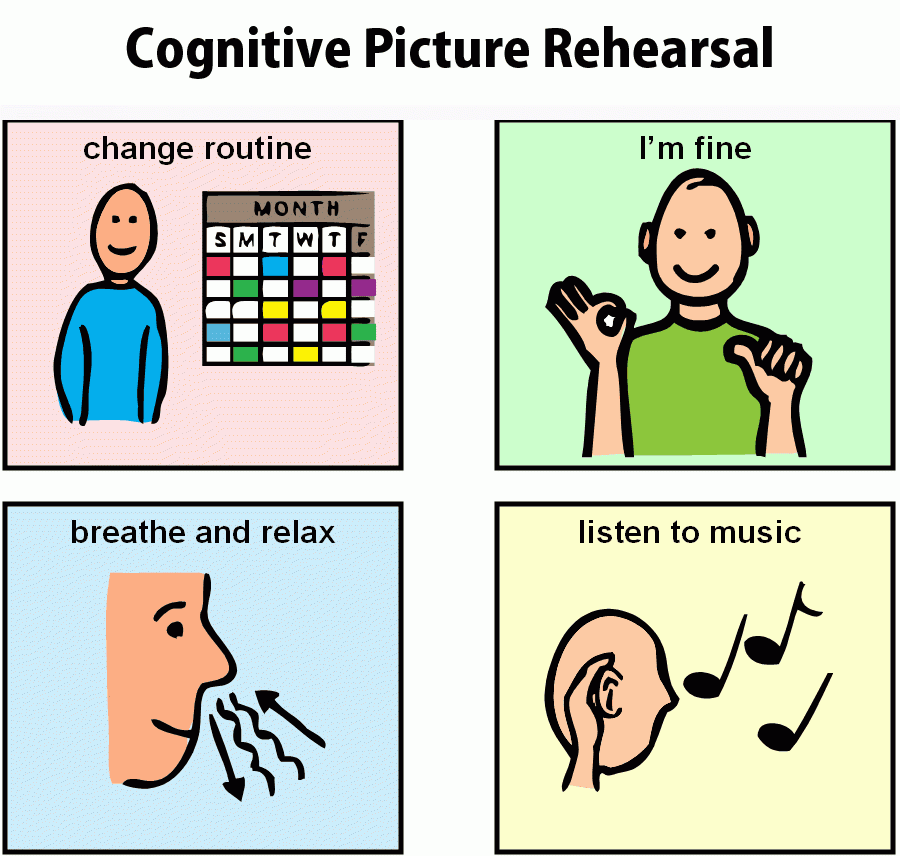
Power Cards
Power cards are visuals that use your child’s special interests as motivation to teach the new skill or expected behavior.
The cards still have a social script along with them. Plus, by using their special interest, your child is motivated to use the strategy presented in the scenario and on the Power Card.
It’s a positive strategy that is often entertaining as well as inexpensive and simple to create.
Power Card Examples –
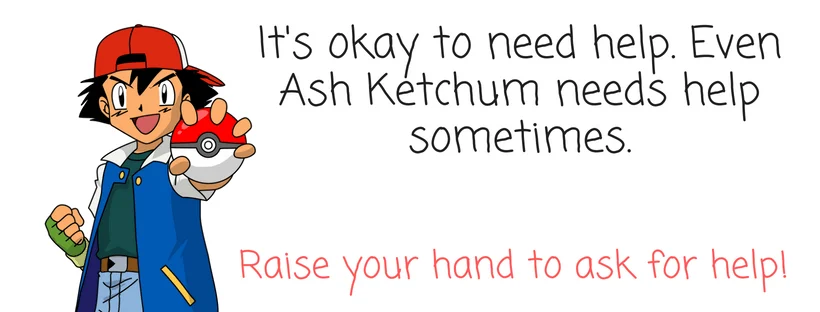
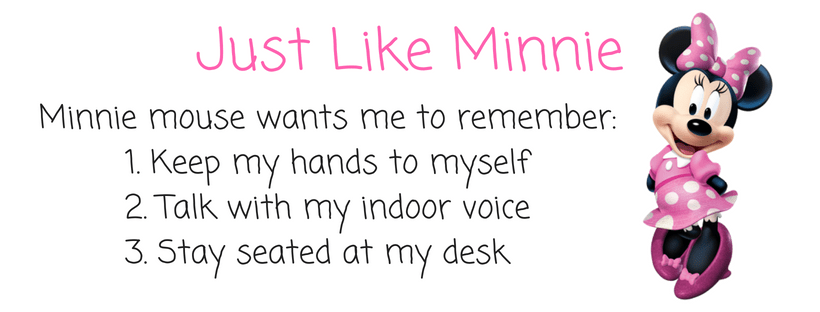
Cartooning
Cartooning involves drawing a picture to explain a situation to your child, including the thoughts of others in the situation. It helps teach social, emotional, academic, organizational, and behavioral skills.
Basically, cartooning helps children understand the perspective of others and what is happening around them. Cartooning can be as simple as drawing stick figures that have thought bubbles and/or speech bubbles.

SuperFlex
The Superflex Social Thinking curriculum uses cartoon strategies throughout their books to help children understand how their behavior can affect the thoughts and feelings of those around them. We have been doing Superflex at home and school with success.
Sample Cartooning from Superflex
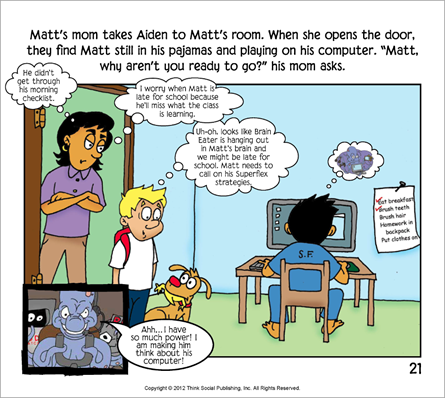
Video Modeling
Video modeling uses video to provide a visual model of the target skill or behavior. It involves recording a video of someone else engaging in the behavior and its viewed by your child at a later time.
You can also take a video of your child engaging in the target behavior to show them later – this is called self-modeling.
Another type of video modeling involves recording yourself performing the skill from your own perspective (first-person video game style) so your child can see exactly what it will look like to them when they perform this skill independently. This type of video modeling is called point-of-view modeling
Evidence-based research shows that video modeling can be effective from early childhood through to teenage years. It can be used to teach communication, social skills, and academic skills.
Imitation
All children learn new things by observing and imitating others. This starts during a baby’s first year and it’s a way all people learn many skills from waving bye-bye, to using a spoon, to swinging a baseball bat.
Children with autism may struggle with spontaneously imitating other people. This can be related to challenges with bilateral coordination, hand-eye coordination, praxis (trouble performing motor movements for the first time), and motor planning and skills.
So because of those possible challenges, and because children with autism best learn kinesthetically, it’s important to facilitate learning through imitation.
For some children, this will be a lifelong method used for learning to skills, especially self-help skills.
A Step-by-Step Process for Teaching Imitation
- Choose a familiar, distraction-free environment.
- Use visual/auditory/tactile strategies to get your child’s attention.
- Let them look at, touch, and manipulate materials – this will help them feel less anxious about the newness.
- Then, move the materials out of reach and use consistent verbal/visual cues such as saying your child’s name and then saying “Do this.”
- Do a one-step action quickly. For example, stacking one block on another or drawing a line to connect two dots.
- Then pass your child the materials to try on their own.
- If they aren’t able to imitate what you just did, try again by saying their name and “Do this” and following through with hand-over-hand support (Strategy 10) if required.
- Praise and reward any success.
- Make sure it’s clear to your child when you are finished.
- If you had to use prompting techniques from strategy 10, gradually fade those prompts. When your child is completing the task without prompts, start making the imitation tasks more complex.
Continue to: Strategy 9 – Add Structure at Home

Personal Space Social Story - Raising An Extraordinary Person
Monday 28th of October 2019
[…] Learn more about social stories here. […]
How to Discipline a Child With Autism - Evidence Based PBIS
Monday 14th of October 2019
[…] Breaks: Picture Rehearsal […]
5 Tips That Make It Easier To Communicate With Your Autistic Child ·
Monday 14th of October 2019
[…] Picture Rehearsal […]
What are "Transactional Supports" in the SCERTS Model? ·
Sunday 13th of October 2019
[…] Picture Rehearsaltrategy 9: Add Structure at Home […]
Pathological Demand Avoidance - Symptoms & Parenting Tips
Sunday 15th of September 2019
[…] One great way to incorporate their interests into their responsibilities is with Power Cards. You can see an example of what a Power Card is here. […]